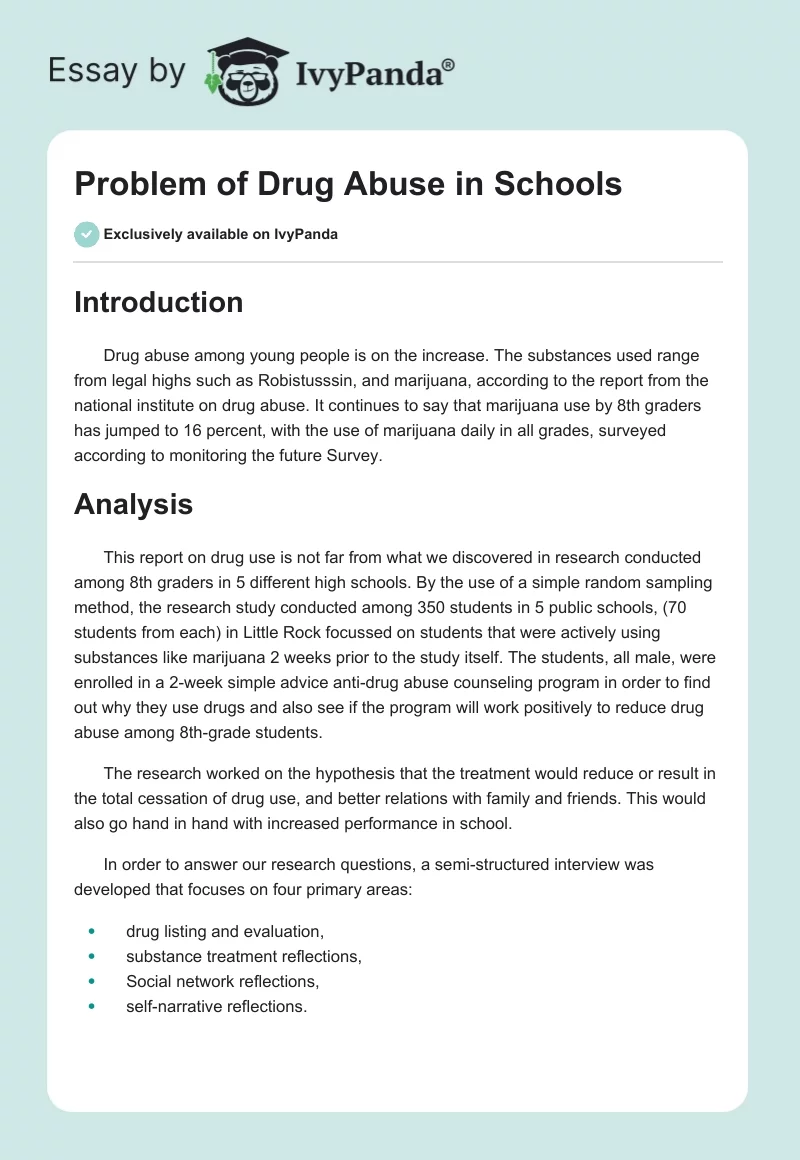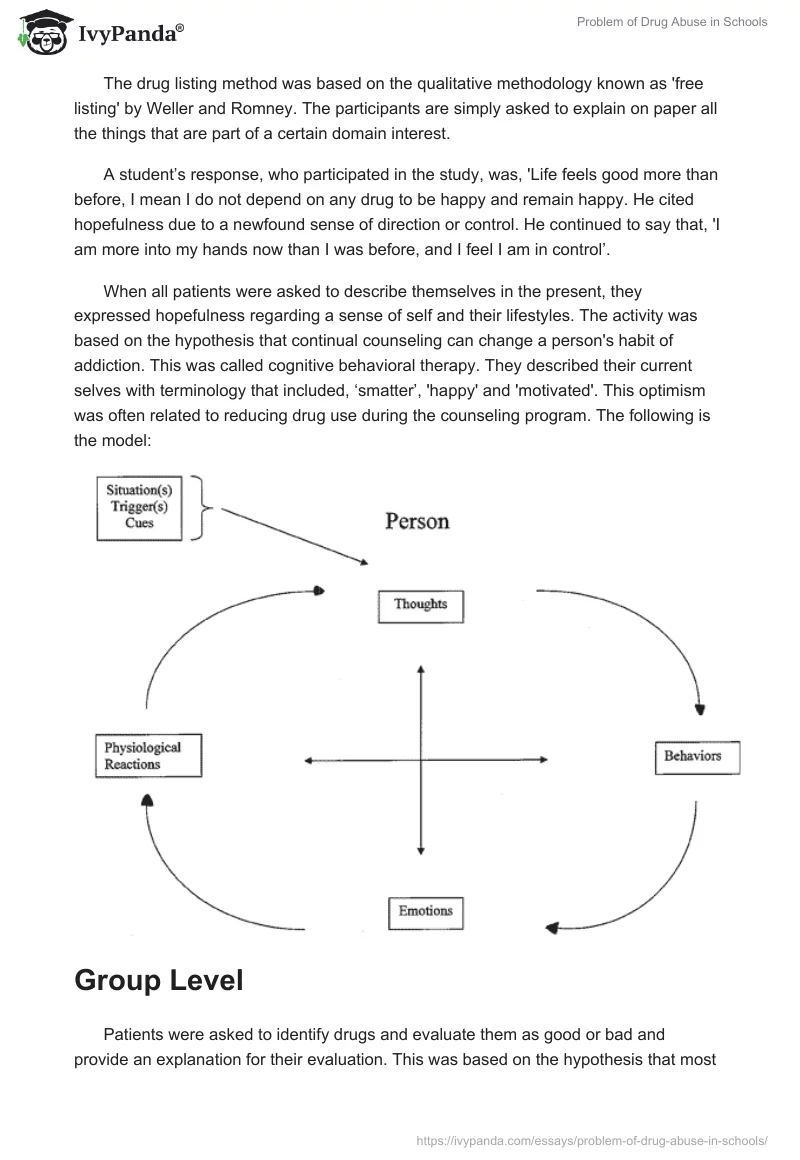Introduction
Drug abuse among young people is on the increase. The substances used range from legal highs such as Robistusssin, and marijuana, according to the report from the national institute on drug abuse. It continues to say that marijuana use by 8th graders has jumped to 16 percent, with the use of marijuana daily in all grades, surveyed according to monitoring the future Survey.
Analysis
This report on drug use is not far from what we discovered in research conducted among 8th graders in 5 different high schools. By the use of a simple random sampling method, the research study conducted among 350 students in 5 public schools, (70 students from each) in Little Rock focussed on students that were actively using substances like marijuana 2 weeks prior to the study itself. The students, all male, were enrolled in a 2-week simple advice anti-drug abuse counseling program in order to find out why they use drugs and also see if the program will work positively to reduce drug abuse among 8th-grade students.
The research worked on the hypothesis that the treatment would reduce or result in the total cessation of drug use, and better relations with family and friends. This would also go hand in hand with increased performance in school.
In order to answer our research questions, a semi-structured interview was developed that focuses on four primary areas:
- drug listing and evaluation,
- substance treatment reflections,
- Social network reflections,
- self-narrative reflections.
The drug listing method was based on the qualitative methodology known as ‘free listing’ by Weller and Romney. The participants are simply asked to explain on paper all the things that are part of a certain domain interest.
A student’s response, who participated in the study, was, ‘Life feels good more than before, I mean I do not depend on any drug to be happy and remain happy. He cited hopefulness due to a newfound sense of direction or control. He continued to say that, ‘I am more into my hands now than I was before, and I feel I am in control’.
When all patients were asked to describe themselves in the present, they expressed hopefulness regarding a sense of self and their lifestyles. The activity was based on the hypothesis that continual counseling can change a person’s habit of addiction. This was called cognitive behavioral therapy. They described their current selves with terminology that included, ‘smatter’, ‘happy’ and ‘motivated’. This optimism was often related to reducing drug use during the counseling program. The following is the model:

Group Level
Patients were asked to identify drugs and evaluate them as good or bad and provide an explanation for their evaluation. This was based on the hypothesis that most patients would easily identify themselves with drugs that they have been using in the past two weeks or as a habitual course. They were then put into a program that involved slowly reducing the amounts of intake per day. The process was called substance withdrawal therapy. They would then explain how it affected them, their social network and schooling and what they would do to revert. A list of options was given to them to try for the coming weeks and later share their experiences. The following is the diagram describing:

At the end of the research, 48 percent reported being abstinent from drug use since the inception of the treatment, at the 3rd month follow up, 67 percent reported being abstinent.
The larger study from where this sample was drawn, patients rated their clinical encounters as helpful, respectful and culturally sensitive thereby corroborating the results of this study.
Conclusion
Through treatment discussions, in session practice, and homework, participants increased their understanding of how their drug use behaviors, and in turn came to understand the need to cease from drug use towards a more positive way of increasing confidence in their lives. In conclusion, these students appeared to reflect upon their brief treatment experiences as helpful, became more aware of their abuse problem and articulated valuations of their present future.


